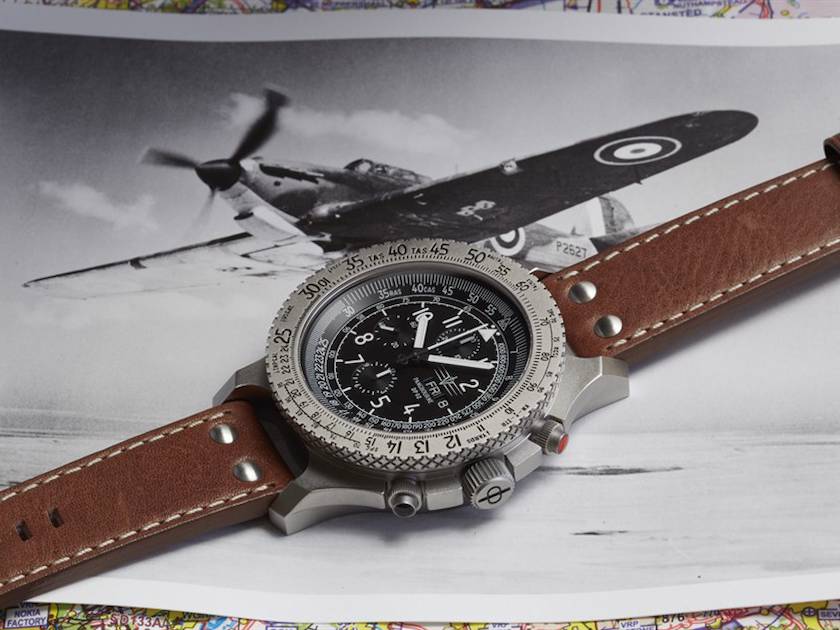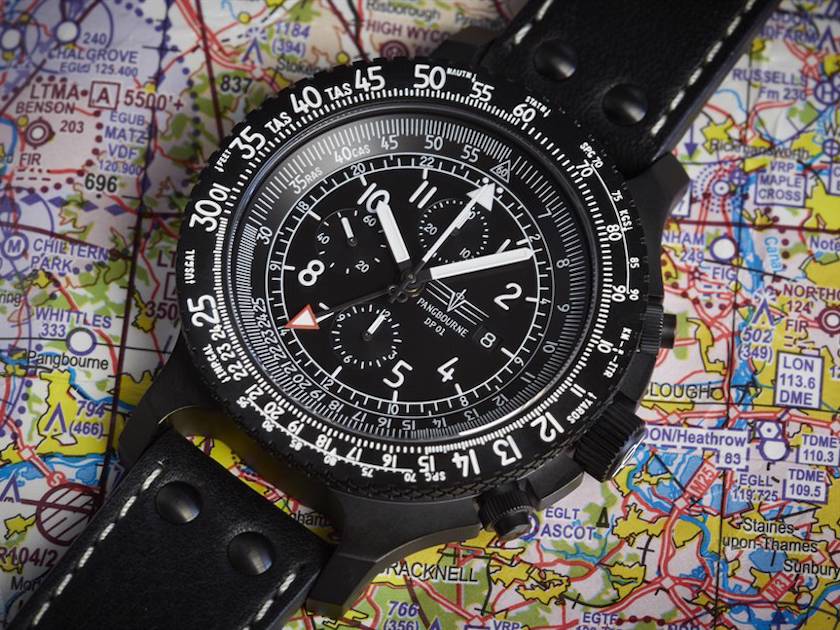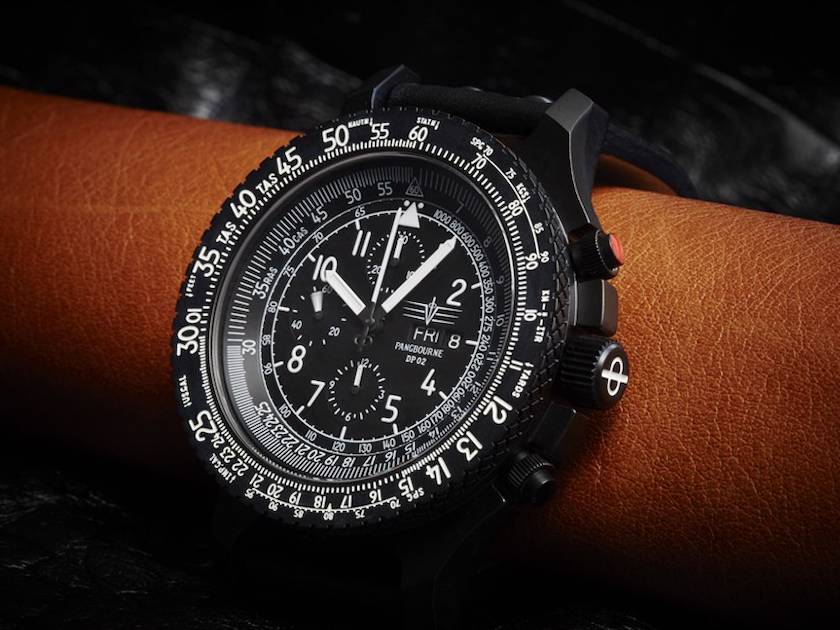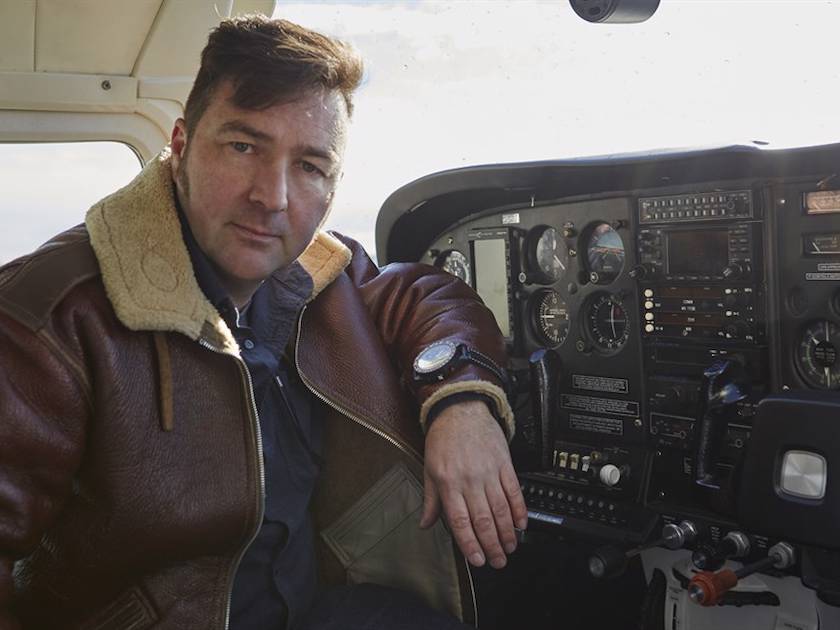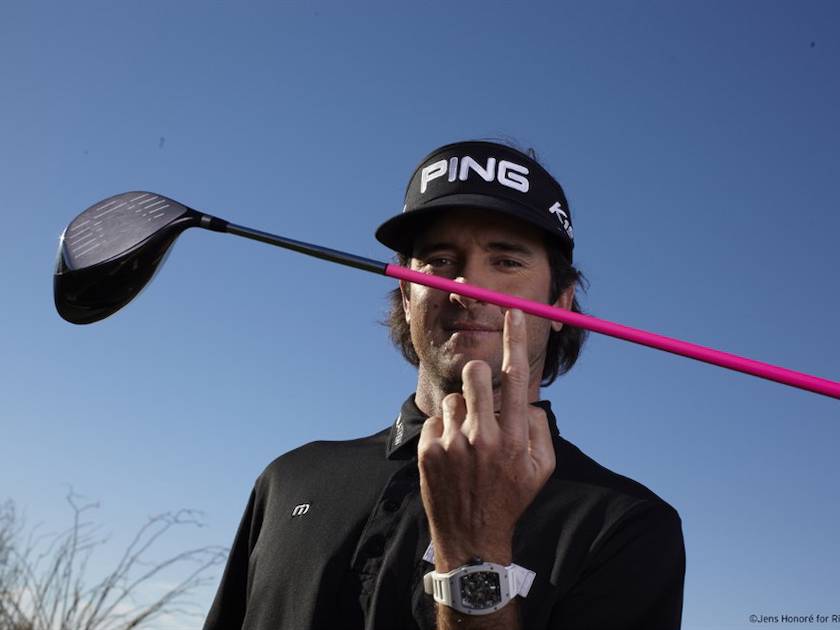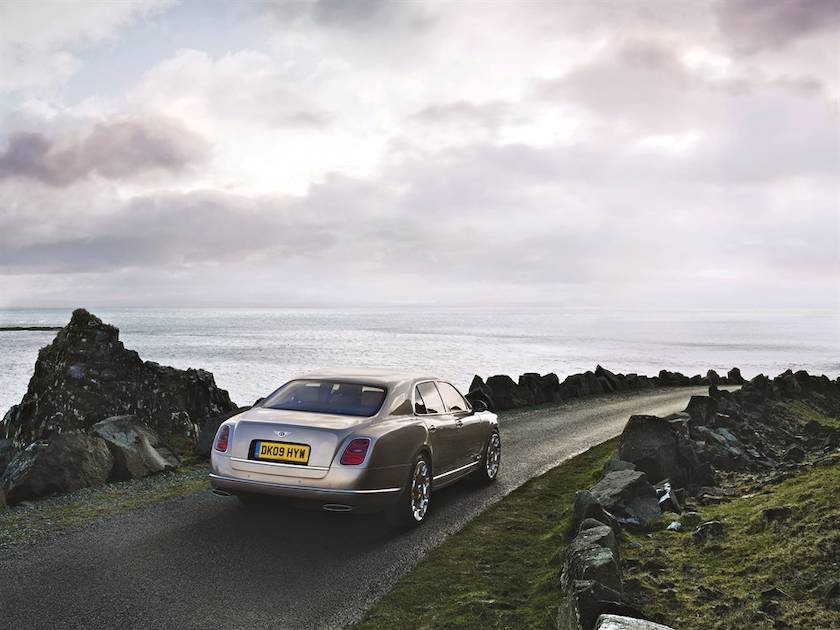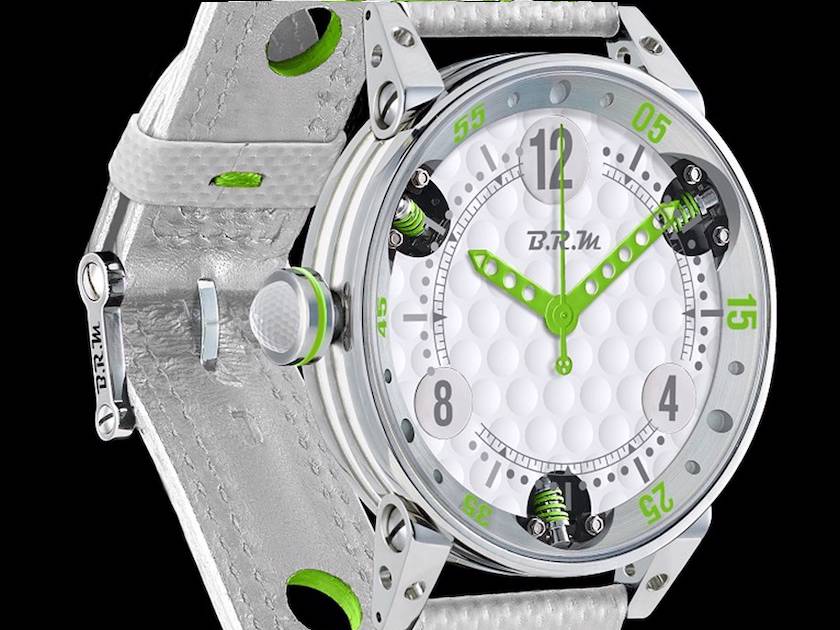Great Watches - Pangbourne
Daniel Pangbourne is an accomplished racing pilot and avid collector of Second World War watches. Unable to find a pilot’s watch which fulfilled his precise requirements, the Englishman took the bold step of combining his passions, designing and creating his very own timepiece.
As spring arrives, legions of avid racers will don overalls, gloves and helmets in order to compete in one of the numerous motorsport events around the globe. Wheel to wheel action provides the thrill-seekers with the adrenaline fix they desperately crave and, for the fortunate, the prospect of podium glory awaits. Leaving the comparative safety of terra firma, air racing takes the notion of high-speed competition to new heights. Daniel Pangbourne is passionate about racing his Grumman Tiger plane with David, his father and navigator, by his side. Daniel has enjoyed much success as an air race pilot. He has won the Royal Aero Club European Air Racing Championship, the Schneider Trophy and currently holds four FAI Aviation World Records. The race course resembles a large rectangle on the ground, with the four corners providing the turning points. Each lap is approximately 25 miles and the total race distance is 125 miles. Planes fly between 100 and 220 miles per hour at a minimum altitude of 500 feet. Precision flying is critical to success; the plane must not infringe the turning points and the watchful eye of GPS monitoring ensures no unfair advantage is gained. The ‘handicapped’ races take into account the maximum speed of each plane, with the slowest plane starting the race first. In theory, all planes, if flown to their full potential, should cross the finish line at the same time. However, in reality it is the expertise of the pilot in flying straight, making allowances for any prevailing wind and exercising turns with absolute precision which determine success or failure.
THE DREAM WATCH. Typical of many competitive souls, Daniel was keen to ensure he had the best equipment at his disposal. Despite there being numerous pilots’ watches available for sale, he simply could not find a timepiece that he felt adequately fulfilled his precise requirements. For most individuals, the difficulty in obtaining a specific piece of equipment may lead to a bout of frustration but, invariably, a degree of compromise ensues. However, the word ‘compromise’ does not seem to be part of this pilot’s lexicon. Daniel embarked on a brave journey to produce a watch ideally equipped to fulfill his desires. His passion for collecting Second World War watches used by RAF fighter and bomber pilots provided a rich source of inspiration. Several watches had the specifications he craved, but none offered everything. The first watch produced by Daniel graced his wrist six years ago. Soon, fellow pilots asked if he could supply them with similarly equipped watches. Over the years, Daniel refined the design and today, Pangbourne London offers its range of pilots’ watches to a global audience. Designed and constructed in a London studio, each timepiece is hand assembled to order, in total contrast to the mass production so common in today's market.
THE DP-01. Pangbourne London produce two models: the DP-01 and DP-02, each offered in a choice of PNP nickel or black PVD finish. The company kindly sent a sample of its DP-01 model in the silvery-coloured PNP nickel for a few days of temporary stewardship and I took the opportunity to familiarise myself with the controls. The DP-01 is a horological leviathan, measuring 50mm in diameter with a case height of 18mm. However, the scale of this watch is justified since legibility is of critical importance when experiencing extreme g-force whilstthree feet away from another plane. Clearly, Pangbourne subscribes to the design doctrine of form following function. Besides displaying hours and minutes, the DP-01 is equipped with a long inventory of features. The date is positioned at 3 o’clock and a small seconds display is located opposite, at 9 o’clock. An additional red-tipped UTC hand, used in conjunction with a 24 hour scale, proves useful when landing in a different time zone. The watch is equipped with an automatic Swiss chronograph movement, providing a useful stop watch function when performing timed turns. The pilot calculates the point at which the turn sequence will be initiated, making allowance for the motion of the wind and, most importantly, not shortcutting the corner and receiving a penalty. Daniel informed me that, “when you have calculated that you need to time a 20-second turn, it has to be 20 seconds, not 19 or 21.”
NO ELECTRONICS. When seeking a private pilot’s licence, the trainee pilot must use a circular slide rule to make various calculations. No electronic devices are allowed in the cockpit. The DP-01 is fitted with a bidirectional rotational bezel and integrated circular slide rule to perform various calculations, including fuel burn and distance travelled. Again, the specification makes perfect sense. Placing the DP-01 upon the wrist, the significant mass of the watch becomes immediately apparent. All Pangbourne watches are constructed of antimagnetic brass and subsequently coated to prevent oxidisation. Conventional stainless steel watches can become magnetised which can adversely affect the compass and some of the avionic systems found in the cockpit. With increased familiarity, the weight of the DP-01 seemed to confer a reassuring sense of solidity.
WATER RESISTANCE. Unlike some commercially available pilot’s watches which have no specified water resistance, the DP-01 has a maximum water resistance of 10 ATM (approximately 100 metres). Daniel proffered that this aspect of the specification should prove sufficient for surviving “aviation ditching”. I must confess that I experienced an overwhelming sense of alarm on hearing this remark and suddenly lost any modicum of desire to fly at 200mph, a mere 500 feet above the ground. Nevertheless, it is evident that the robust inventory of properties makes this the ideal flight companion for serious aviators. The brown leather strap affixes to the wrist with a pin buckle, equipped with a broad, rectangular-tipped pin. The watch is also supplied with a matching leather extension piece allowing the watch to be worn on the outside of the flying suit or jacket, aiding visibility in the cockpit. This is reminiscent of when pilots wore watches in the 1930s and 40s, which were viewed as an additional cockpit instrument.
TACHYMETER. The DP-02 shares similar design codes to the DP-01 but supplants the UTC hand in favour of a day display and tachymeter scale. This latter detail is a useful speed calculation device. By using the chronograph function to measure the time it takes the plane to cover a mile, the speed can be determined by reading the value indicated by the halted stop watch hand. No batteries or electronics are employed; all indications are powered by the self-winding Swiss movement. Often, watches are conceived by marketing professionals who seek to satisfy the wants of an identified niche. Pangbourne London was born from a man’s passion for air racing and his desire to create a watch which would be both functional and iconic. The unconventional approach to creating the aeronautical timepieces made by Pangbourne London is charming. Moreover, the motives of the brand’s founder and the rationale for the creation of this watch bestow an endearing honesty which is clear to see.

Journalist
